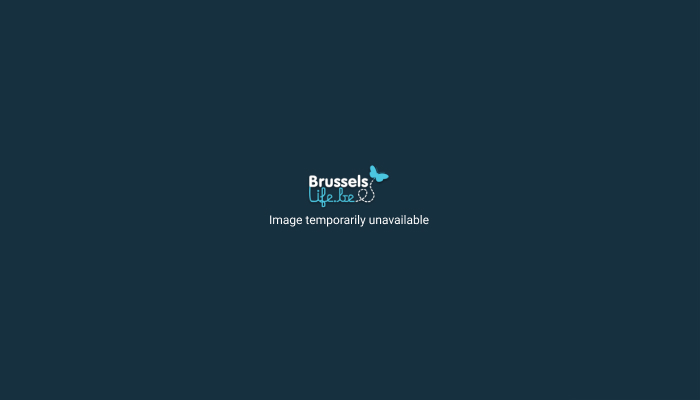
Gaëtan was born in the South of France, where the sun always shines and he landed in Brussels in 1985. After a while, inspired by the tags on the city's walls, he began 'writing' like most of the street artists, which means tagging his signature all over the city. Afterwards, he made a start on colorful lettrings, always becoming bigger and bigger until real frescos. But Gaëtan was given a one year jail sentence and was fined up to several millions Belgian franc! But fortunately, an association rescued him! This story woke him up: he decided to build his career totally lawfully, painting on canvas and mirrors. In 2004, he founded Tarantino asbl, an association bringing more than 30 European street artists together and which sets up artistic events, promoting street art and graffiti.
Subsidized graff?
Since October 2011, at the corner of Alexiens and Poinçon streets, a giant fresco (dimensions: 25m on 5m), made by Gaëtan Tarantino, has a pride of place! A weird story, because the fresco was ordered by the city of Brussels, aside of the Comics path and as part of the Rouppe district contract. Indeed, the city has decided to place a Frescos path downtown, made up of graffitis and other ½contemporary pieces of art. For once, the fresco is perfectly lawful but it is so ephemeral! In truth, the school IHECS, located in front of the fresco, will be extended... stretch to the fresco! That's why the city chose to invest in a minimal budget and not in a green and expensive waterfall. In short, choosing the fresco is the result of a budgetary constraint and the work of Tarantino could disappear in 4 or 5 years, such as most of the illegal graffitis meant to be erased. But the good point is that the project confirms graffiti as an essential element for the urban space. Tarantino is not a freshman, he has seen a lot of things with his asbl! Facts…: in 2006, during the first edition of Brussel's Graffiti , MABRU (Brussels Morning Market) offers one of its halls to the street artists association. For the 2007 and 2008 editions, the association painted the biggest mural fresco of Belgium at the 'De Wand' station. More than 5000m2 had been updated by thirty artists from Belgium, France, Netherlands and Great-Britain. Graff's reputation is becoming better and more and more public spaces are devoted to this art. We may speak about a kind of 'supervised' graff policy. Could this policy be bad for the street art? Anyway, these artists will always need concrete and the graff will always stay something born and existing illegally...Kriss Gutierrez Cuervo

Did you like this article?
Share it